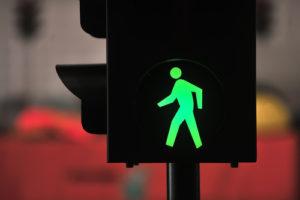

It is not a joke; Google’s latest tactic to prevent injury after pedestrian accidents with its self-driving cars is to use a flypaper-like substance. Google received approval of its patent late in May. A spokeswoman for Google reminded the press not everything Google patents will become reality. Google’s tech only becomes a reality after rigorous testing and inspection.
Still, the patent idea has the public speculating on the future of safety around self-driving cars.
How Google’s Flypaper System Would Work
The recently approved patent shows a breakaway front hood coating, much like an eggshell. Upon impact, the shell shatters to reveal an adhesive that captures the falling pedestrian. The goal of the system is to prevent the pedestrian from falling forward into oncoming traffic or onto the pavement.
Critics of the new system were quick to point out this could pose an extra risk to a pedestrian if the car hits another object head-on. Another concern is if the pedestrian attaches to the car while any part of their body is still touching the road. If the car continues to move, the exposed body part could suffer continued damage.
There is also concern over whether or not the breakaway flypaper design will work at higher speeds. The adhesive would need to be strong enough to secure the passenger and hold him until the car can stop.
For a free legal consultation, call (614) 538-1116
The Call for Pedestrian Safety Around Self-Driving Cars
The public has raised questions regarding the safety of self-driving cars ever since the first glimpse of the concept. While Google’s cars have logged more than 1.5 million miles in self-driving mode, they still have a human co-pilot to take over in the event of an emergency.
Google cars have demonstrated exceptional avoidance of other vehicles and large obstacles. But there is concern pedestrians may be at risk, an issue Google addressed in a separate patent last year. In November 2015, Google’s patent uses electronic screens with traffic signals mounted on the sides and front of their cars to tell pedestrians of the car’s intent.
While these innovations are promising, Google is still working on improvements to their pedestrian identification systems to further reduce the risk of a crash. Current systems use deep network connections and neural networking to scan and identify pedestrians. Google is constantly innovating the response time for these systems to identify and react to achieve optimal performance.
Self-Driving Cars Are Still in a Legal Gray Area
The law is still unclear on how our legal system will handle accidents with self-driving cars. Insurance companies have yet to issue any definitive decisions regarding coverage of self-driving car accidents. Society still has a few years to work out these details, and the results are sure to be interesting.
This gray area can make pedestrian accidents especially confusing. For help after an Ohio pedestrian accident, contact Bressman Law: (614) 538-1116.
Call or text (614) 538-1116 or complete a Free Case Evaluation form








